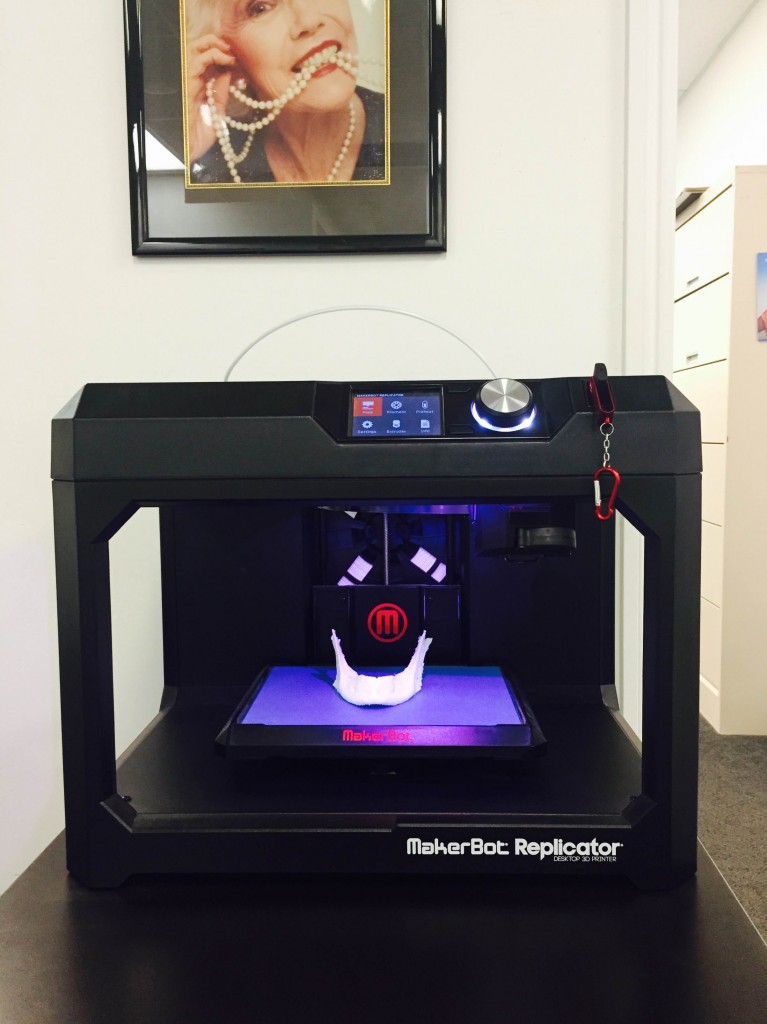“3D Printing in Dentistry” featured in British Dental Journal
By A. Dawood, B. Marti Marti, V. Sauret-Jackson and A. Darwood
“Used in aerospace, defense, art and design, 3D printing is becoming a subject of great interest in surgery. The technology has a particular resonance with dentistry, and with advances in 3D imaging and modeling technologies such as cone beam computed tomography and intraoral scanning, and with the relatively long history of the use of CAD CAM technologies in dentistry, it will become of increasing importance. Uses of 3D printing include the production of drill guides for dental implants, the production of physical models for prosthodontics, orthodontics and surgery, the manufacture of dental, craniomaxillofacial and orthopaedic implants, and the fabrication of copings and frameworks for implant and dental restorations.
The term 3D printing is generally used to describe a manufacturing approach that builds objects one layer at a time, adding multiple layers to form an object. This process is more correctly described as additive manufacturing, and is also referred to as rapid prototyping. While we are years away from seeing the production of viable 3D printed organs, dentistry and oral and maxillofacial surgery have used 3D printing for years, and have whole-heartedly embraced the use of digital manufacturing technologies, notably, the use of computer-aided design and manufacturing.
For 3D printing to have value we need to be able to create objects to print; computer-aided design (CAD) software allows us to create objects from scratch, but in dentistry and surgery we also have ready access to volumetric data in the form of computed tomography (CT) data, cone beam computed tomography (CBCT) data, and intraoral or laboratory optical surface scan data. Recent developments in CBCT and optical scan technology, in particular, have revolutionized, and are profoundly changing many aspects of restorative and implant dentistry. These powerful technological tools are at the disposal of a class of individuals—dentists and dental technicians—who are often polymaths, having a broad level of creativity and an understanding of technology.
This use of technology facilities the use of materials, which would otherwise be heard to work with, and eliminates labor intensive artisanal production techniques, allowing the dental technician to focus on his manual skills on more creative aspects of the manufacturing process. Of course every time that a dentist operates to provide a restoration or reconstruction, the procedure is unique to that patient, that jaw, that tooth, or that implant. The reconstruction or restoration will also have innate complexity requiring the reproduction of convoluted geometry with a high level of precision.
Ready access to CBCT means that it is possible to provide volumetric ‘image’ data to a 3D printer before surgery and to make detailed replicas of the patient’s jaws. This allows anatomy, particularly complex, unusual, or unfamiliar anatomy, to be carefully reviewed and a surgical approach planned or practiced before surgery.”
To read more about this topic, visit http://www.nature.com/…/jo…/v219/n11/pdf/sj.bdj.2015.914.pdf

